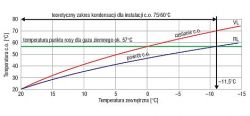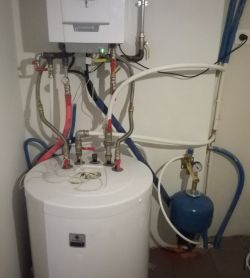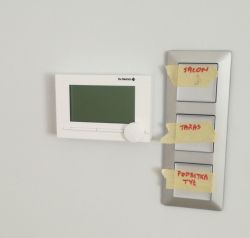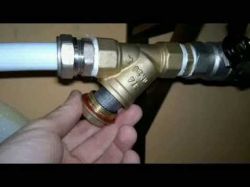These radiators, however, not so much oversized. Unless you have not specified one room of about 15m2, because that's how much I need for your 80m2. What do you have from the radiators, I do not count the ladder, because I do not know what it is and what its power is, at the installation parameters of 55/45/20, the heaters power is 5250W. With a minimum furnace power of 6.1 kW. Assuming you did not enter one room / radiator for 15m2 with a radiator similar to those in the rooms, it would have resulted in 6600W of radiators power on the installation parameters without a ladder. With a ladder it would give about 6800 / 6900W, which is ok, because it is above the minimum power of the boiler. Here is the calculation for 20 degrees at home, you have a little more, so the power of the radiators will be a bit less)
You have a condensate boiler, so the lower the supply temperature, the more heat is recovered from the steam in the flue gas. By chasing the boiler to 90 degrees, you have no condensation at all, so you lose about 15% of the heat to the chimney. In this case, the boiler works like a normal turbo and not a condensing boiler.
You have to choose between economy (not necessarily with reduced comfort) and fast reheating. I would personally choose economics.
So I would do this:
1) I assume that the boiler operating at 50 degrees in the current conditions (daily average about 0 degrees) is able to maintain the temperature in the cottage, and even can slowly raise it in the morning, I would reduce the difference between day and night from 2 degrees to 1. Night reduction practically it gives no savings, only sleeps a little better.
2) AD 1 temperature, assuming you have this 1 heater more than you specified, I would set the boiler to about 47-50 degrees. The stove will run at minimum power almost all the time, the radiators will be warm almost non-stop (but not hot, they will not mix the dust) which will improve comfort (equal temperature all day long)
3) With the increase of the maximum temperature for CO, I would wait for -10 frosts, etc. If the boiler, despite 24 hours of operation at ~ 50 degrees Celsius, would not be able to maintain the assumed heat in the house, I would suffer a maximum of 55-60 degrees (how much it actually depends on house insulation, etc., it can only be checked practically)
4) If you are bothered by the slow rise in temperature in your home during the transition from night to day, just set the daytime faster.
However, if you only have as many radiators as you wrote, the boiler power at 50 degrees would exceed the power of the radiators, which would overheat the CO water by several degrees and periodically turn off the burner in the boiler.
Write if you have it at 50 degrees Finally, the condensation in a gas condensing furnace (which gives a gain of about 15% compared to a conventional furnace) takes place when the return from the heaters is below 57 degrees. Except that slightly below 57 it is practically non-existent. The return temperature is correlated quite closely with the flow temperature. If you have a 50-degree supply, the return can be around 40-45. At 60 degrees, the return is around 52-45 etc. Something like the chart below, of course the return temperature value is not always the same in every installation, but the graph shows a visible correlation:

Economy punishes you to go as low as possible with the feed, so the return will be lower, and thus also more economical operation of the condensing boiler.







